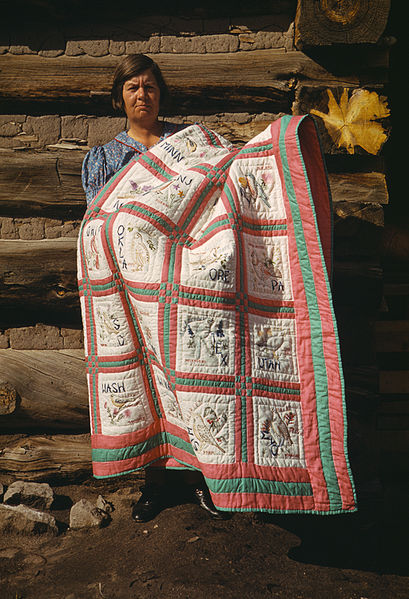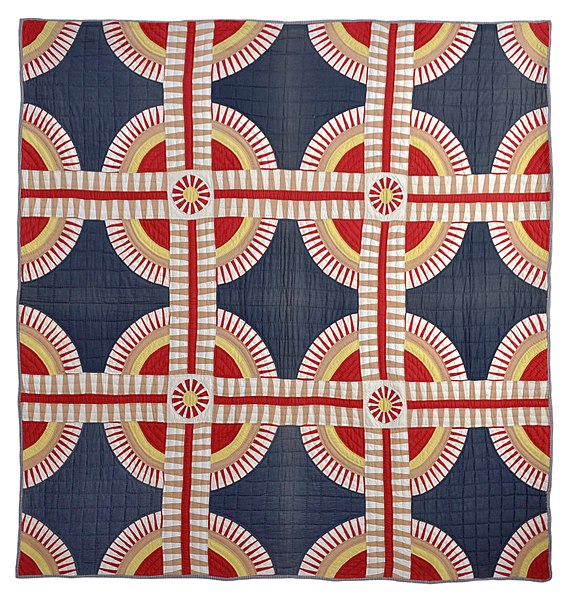Patchwork or "pieced work" is a form of needlework that involves sewing together pieces of fabric into a larger design. The larger design is usually based on repeating patterns built up with different fabric shapes. These shapes are carefully measured and cut, basic geometric shapes making them easy to piece together.
Traditional Korean patchwork pojagi wrapping cloth
Example of patchwork
A patchwork representing Little Amsterdam
Woman wearing a traditional jeogori (jacket) made with Jogakbo, or Korean patchwork
A quilt is a multi-layered textile, traditionally composed of two or more layers of fabric or fiber. Commonly three layers are used with a filler material. These layers traditionally include a woven cloth top, a layer of batting or wadding, and a woven back combined using the techniques of quilting. This is the process of sewing on the face of the fabric, and not just the edges, to combine the three layers together to reinforce the material. Stitching patterns can be a decorative element. A single piece of fabric can be used for the top of a quilt, but in many cases the top is created from smaller fabric pieces joined, or patchwork. The pattern and color of these pieces creates the design. Quilts may contain valuable historical information about their creators, "visualizing particular segments of history in tangible, textured ways".
1940 photograph by Russell Lee of Mrs. Bill Stagg of Pie Town, New Mexico with state quilt
Little Amsterdam
Pieced quilt, cottons, c. 1865, unknown maker, Kentucky, dimensions: 80×85 inches. The design had numerous names such as Rocky Road and Crown of Thorns until it was renamed and marketed as "New York Beauty" in the 1930s by the Mountain Mist company. Included in the book "New York Beauty, Quilts from the Volckening Collection" (Quiltmania, France). Collection of Bill Volckening, Portland, Oregon.
Quilting bee in Central Park, 1973







